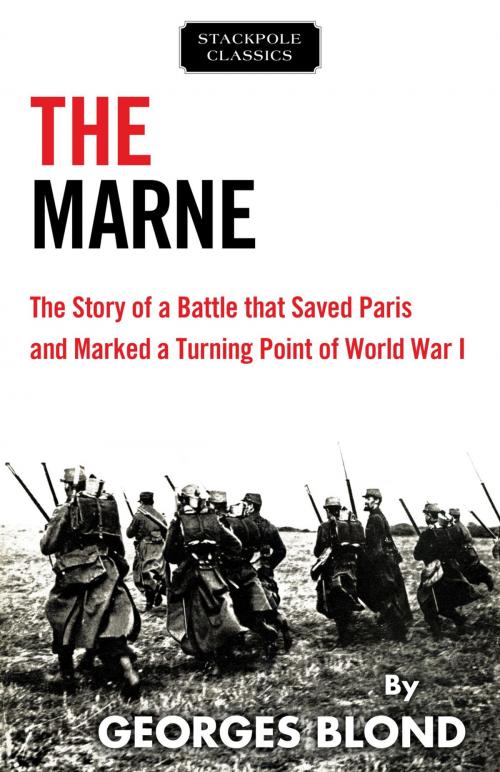The Marne
The Story of a Battle that Saved Paris and Marked a Turning Point of World War I
Nonfiction, History, Military, World War I| Author: | Georges Blond | ISBN: | 9780811766760 |
| Publisher: | Stackpole Books | Publication: | September 15, 2017 |
| Imprint: | Stackpole Books | Language: | English |
| Author: | Georges Blond |
| ISBN: | 9780811766760 |
| Publisher: | Stackpole Books |
| Publication: | September 15, 2017 |
| Imprint: | Stackpole Books |
| Language: | English |
One of the decisive battles of the 20th century began on August 29, 1914 with the cry that echoed throughout France: “The Prussians are coming!” It ended on September 10th, that same year. Earlier, more than a million German troops—five massive armies—poured into Belgium and France. The French army began the biggest retreat in its history, and Germany seemed about to triumph. But the German right wing, instead of wheeling to the east of Paris, as the famous Schlieffen Plan required, crossed to the west of Paris, exposing its banks. The counterattack was led from Paris, using the city’s taxi streets in a famous dash to take soldiers to the front. The German plan was thwarted, and the Kaiser’s army was forced to retreat. It was an astonishing and costly victory: over 300,000 French soldiers died. As stirring as a novel, The Marne is a classic of military history.
One of the decisive battles of the 20th century began on August 29, 1914 with the cry that echoed throughout France: “The Prussians are coming!” It ended on September 10th, that same year. Earlier, more than a million German troops—five massive armies—poured into Belgium and France. The French army began the biggest retreat in its history, and Germany seemed about to triumph. But the German right wing, instead of wheeling to the east of Paris, as the famous Schlieffen Plan required, crossed to the west of Paris, exposing its banks. The counterattack was led from Paris, using the city’s taxi streets in a famous dash to take soldiers to the front. The German plan was thwarted, and the Kaiser’s army was forced to retreat. It was an astonishing and costly victory: over 300,000 French soldiers died. As stirring as a novel, The Marne is a classic of military history.















